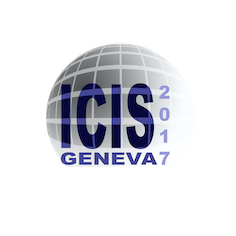Speaker
Description
The high-energy ion nanoprobe LIPSION* of the Universität Leipzig consists of a 3 MV singletron accelerator in combination with an ion nanoprobe which presently focusses protons and helium ions to diameters in the sub-100 nm range.
The currently used RF ion source in the accelerator dominantly produces single-charged ions of a mass range of hydrogen up to xenon. Their ionic charge state 1 (at most 2) determines the maximum of the achievable kinetic energy in combination with the 3 MV platform potential of the singletron. Furthermore, the life-time of the ion source is limited to approx. 600 h (as indicated by the manufacturer). In consideration of this fact the use of a durable ion source producing projectiles with multiple charge states for significantly higher kinetic energies (scales linearly with the charge state) would be of significant advantage. An Electron Cyclotron Resonance Ion Source (ECRIS) with almost maintenance-free operation suites these requirements and is much better adapted to the conditions in the LIPSION system providing sufficiently high currents of ions with low up to medium charge states (e.g. Ar$^{8+}$) to compensate for beam losses by ion transport and focusing. The ECRIS allows to provide a wide range of ionic species and charge states. A downstream particle separator based on the principle of a Wien filter purifies the particle beam before it enters the accelerator beamline with accelerator voltages of 200 kV up to 3 MV.
The aim of the described upgrade is to have a new device available producing surface defects by means of ion beams and to functionalize the resulting effects as well as to have the potential for mask-free ion implantation with focussed ion beams. The refractive power depends on the charge state in quadratic way. Thus the new ion source allows focusing heavy ions. Thus, the upgrade of the existing facility leads to a substantial increase in the performance of LIPSION, in particular for materials science. In this facility, ions with higher charge states and kinetic energy can then be placed on a few nanometers with an also upgraded mask-free patterning system.
*LIPSION from Latin: LIPSia, the Italian name of the city Leipzig and ION
